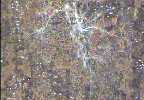
- Open jpeg (.jpg)
- Download bitmap (.bmp)
- Date collected: 05/18/2002
Site (plant species): Cupressus abramsiana
Mycorrhizal colonization of root clump
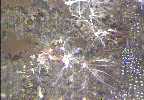
- Open jpeg (.jpg)
- Download bitmap (.bmp)
- Date collected: 05/18/2002
Site (plant species): Cupressus abramsiana
Zoom in on mycorrhizal roots; note the mystery invertebrate in the lower left corner
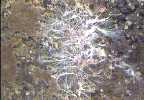
- Open jpeg (.jpg)
- Download bitmap (.bmp)
- Date collected: 05/18/2002
Site (plant species): Cupressus abramsiana
Intense mycorrhizal colonization. The roots are hard to distinguish.
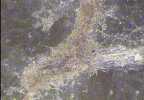
- Open jpeg (.jpg)
- Download bitmap (.bmp)
- Date collected: 04/18/2002
Site (plant species): Arctostaphylos hookeri
Hot spot of microbial colonization on mature root.
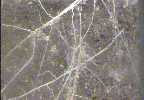
- Open jpeg (.jpg)
- Download bitmap (.bmp)
- Date collected: 04/18/2002
Site (plant species): Quercus agrifolia
Root network with hyphal colonization.
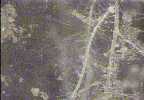
- Open jpeg (.jpg)
- Download bitmap (.bmp)
- Date collected: 04/18/2002
Site (plant species): Quercus agrifolia
Zoom in on above.
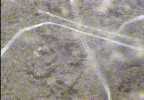
- Open jpeg (.jpg)
- Download bitmap (.bmp)
- Date collected: 04/18/2002
Site (plant species): Quercus agrifolia
Full zoom on another root/fungal network. Notice both lateral and vertical roots.
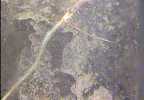
- Open jpeg (.jpg)
- Download bitmap (.bmp)
- Date collected: 04/18/2002
Site (plant species): Quercus agrifolia
"Stained" root.
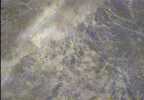
- Open jpeg (.jpg)
- Download bitmap (.bmp)
- Date collected: 04/18/2002
Site (plant species): Quercus agrifolia
Zoom in on above...extensive hyphal network colonizing the root substrate.
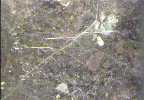
- Open jpeg (.jpg)
- Download bitmap (.bmp)
- Date collected: 04/18/2002
Site (plant species): Quercus agrifolia
Wispy, branched thin white root...bacterial clumps on right side of the screen?
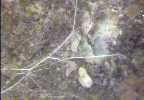
- Open jpeg (.jpg)
- Download bitmap (.bmp)
- Date collected: 04/18/2002
Site (plant species): Quercus agrifolia
Half zoom on above...
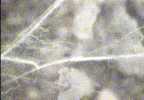
- Open jpeg (.jpg)
- Download bitmap (.bmp)
- Date collected: 04/18/2002
Site (plant species): Quercus agrifolia
Full zoom on above...
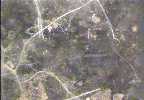
- Open jpeg (.jpg)
- Download bitmap (.bmp)
- Date collected: 06/05/2002
Site (plant species): Genista monspessulana
Could be more root hairs, but the assymetry suggests that some of those wispy threads may be fungal.
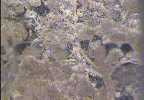
- Open jpeg (.jpg)
- Download bitmap (.bmp)
- Date collected: 06/05/2002
Site (plant species): Genista monspessulana
That whitish look to the soil suggests that the soil here has been colonized by a dense fungal mycelium...several root branches radiate from the dense central colony.

- Open jpeg (.jpg)
- Download bitmap (.bmp)
- Date collected: 06/05/2002
Site (plant species): Genista monspessulana
Zoom in on above...
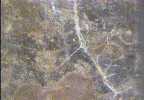
- Open jpeg (.jpg)
- Download bitmap (.bmp)
- Date collected: 06/05/2002
Site (plant species): Genista monspessulana
A lot of fungal activity around this root. It doesn't appear to be mycorrhizal, however.
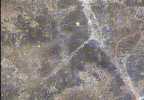
- Open jpeg (.jpg)
- Download bitmap (.bmp)
- Date collected: 06/05/2002
Site (plant species): Genista monspessulana
Zoom in on above image...
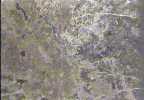
- Open jpeg (.jpg)
- Download bitmap (.bmp)
- Date collected: 06/05/2002
Site (plant species): Genista monspessulana
Again we see the whitish color suggesting mycelial colonization of the soil in this region. Roots are present as well, although it is uncertain whether they are directly interacting with the fungal mass or if the two organisms are merely exploiting the same food source.
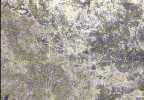
- Open jpeg (.jpg)
- Download bitmap (.bmp)
- Date collected: 06/05/2002
Site (plant species): Genista monspessulana
Zoom in on above image...
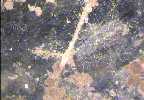
- Open jpeg (.jpg)
- Download bitmap (.bmp)
- Date collected: 04/18/2002
Site (plant species): Eucalyptus sp.
Notice the cloudy smear on the tube. It appears to be evidence of actinomycete or bacterial activity.
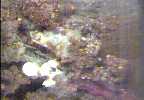
- Open jpeg (.jpg)
- Download bitmap (.bmp)
- Date collected: 05/01/2002
Site (plant species): Pinus ponderosa
These fungal growths could be associated with the roots in this image.
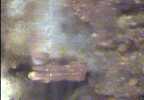
- Open jpeg (.jpg)
- Download bitmap (.bmp)
- Date collected: 05/01/2002
Site (plant species): Pinus ponderosa
Full zoom on the above image. The cloudy appearance is characteristic of soil fungi, whose individual hyphae are too small to be visible with our camera.
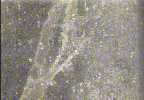
- Open jpeg (.jpg)
- Download bitmap (.bmp)
- Date collected: 05/03/2002
Site (plant species): Populus trichocarpa
This root is surrounded by hairs. Are they root hairs or some microbial community that thrives in this moist environment?
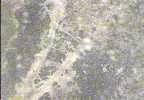
- Open jpeg (.jpg)
- Download bitmap (.bmp)
- Date collected: 05/03/2002
Site (plant species): Populus trichocarpa
Half zoom in on above...
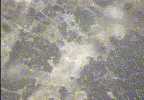
- Open jpeg (.jpg)
- Download bitmap (.bmp)
- Date collected: 05/03/2002
Site (plant species): Populus trichocarpa
Full zoom on above. Now the hairs no longer resemble root hairs.
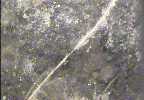
- Open jpeg (.jpg)
- Download bitmap (.bmp)
- Date collected: 05/18/2002
Site (plant species): Salix lasiolepis
This active root seems to have a vague whitish substance surounding it...
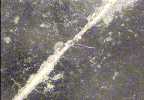
- Open jpeg (.jpg)
- Download bitmap (.bmp)
- Date collected: 05/18/2002
Site (plant species): Salix lasiolepis
In this zoom of the above image, you can see that the whitish substance forms a sort of sheath around the root, and is probably due to the presence of soil fungi. The concept of a "rhizosphere", a zone adjacent to roots that is influenced by root activities, is perfectly clear in this image. Soil fungi are presumably feeding on sugars leaking from the root.
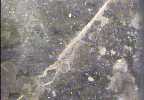
- Open jpeg (.jpg)
- Download bitmap (.bmp)
- Date collected: 05/18/2002
Site (plant species): Salix lasiolepis
This image was taken further down the same root.
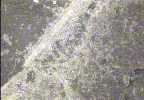
- Open jpeg (.jpg)
- Download bitmap (.bmp)
- Date collected: 05/18/2002
Site (plant species): Salix lasiolepis
Zoom in on above.
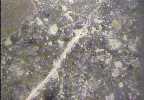
- Open jpeg (.jpg)
- Download bitmap (.bmp)
- Date collected: 05/18/2002
Site (plant species): Salix lasiolepis
This is another image from the same root.
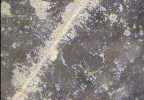
- Open jpeg (.jpg)
- Download bitmap (.bmp)
- Date collected: 05/18/2002
Site (plant species): Salix lasiolepis
Zoom in on above. In an image like this it is impossible to distinguish between root hairs and soil fungi.
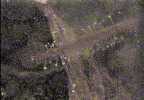
- Open jpeg (.jpg)
- Download bitmap (.bmp)
- Date collected: 05/08/2002
Site (plant species): Sequoia sempervirens ("B")
These peculiar structures seem to be fungal fruiting bodies growing out of the root tissue. You'll see more images below of this strange phenomenon.
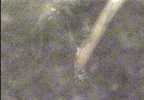
- Open jpeg (.jpg)
- Download bitmap (.bmp)
- Date collected: 05/08/2002
Site (plant species): Sequoia sempervirens ("B")
These strands appear to be fungal hyphae infecting a root tip.
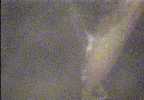
- Open jpeg (.jpg)
- Download bitmap (.bmp)
- Date collected: 05/08/2002
Site (plant species): Sequoia sempervirens ("B")
Full zoom on above image...
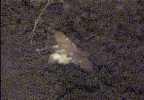
- Open jpeg (.jpg)
- Download bitmap (.bmp)
- Date collected: 05/08/2002
Site (plant species): Sequoia sempervirens ("B")
Fungal hot spot; cotton-like...
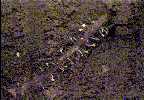
- Open jpeg (.jpg)
- Download bitmap (.bmp)
- Date collected: 05/08/2002
Site (plant species): Sequoia sempervirens ("B")
Another fungal-infected root.
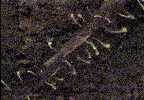
- Open jpeg (.jpg)
- Download bitmap (.bmp)
- Date collected: 05/08/2002
Site (plant species): Sequoia sempervirens ("B")
Full zoom in on above.
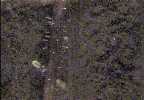
- Open jpeg (.jpg)
- Download bitmap (.bmp)
- Date collected: 05/08/2002
Site (plant species): Sequoia sempervirens ("B")
Another fungal-infected root.
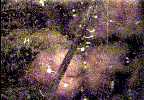
- Open jpeg (.jpg)
- Download bitmap (.bmp)
- Date collected: 05/08/2002
Site (plant species): Sequoia sempervirens ("B")
This image nicely shows the shapes of the fruiting bodies.
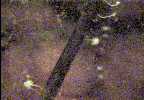
- Open jpeg (.jpg)
- Download bitmap (.bmp)
- Date collected: 05/08/2002
Site (plant species): Sequoia sempervirens ("B")
Zoom in on above image...
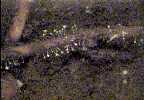
- Open jpeg (.jpg)
- Download bitmap (.bmp)
- Date collected: 05/08/2002
Site (plant species): Sequoia sempervirens ("B")
A 'forest' of fungal branches...
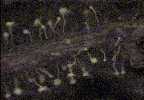
- Open jpeg (.jpg)
- Download bitmap (.bmp)
- Date collected: 05/08/2002
Site (plant species): Sequoia sempervirens ("B")
Nice zoom shot of above image; notice the characteristic red color of the redwood root.
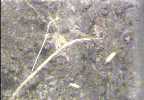
- Open jpeg (.jpg)
- Download bitmap (.bmp)
- Date collected: 05/08/2002
Site (plant species): Sequoia sempervirens ("B")
The white burst on the screen indicate another fungal hot spot...notice the insect at the bottom of the screen.
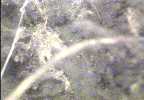
- Open jpeg (.jpg)
- Download bitmap (.bmp)
- Date collected: 05/08/2002
Site (plant species): Sequoia sempervirens ("B")
Zoom in on section of mycelia from the above image.
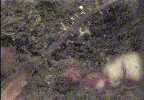
- Open jpeg (.jpg)
- Download bitmap (.bmp)
- Date collected: 05/08/2002
Site (plant species): Sequoia sempervirens ("B")
More roots colonized by fungi
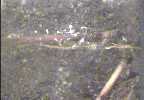
- Open jpeg (.jpg)
- Download bitmap (.bmp)
- Date collected: 05/08/2002
Site (plant species): Sequoia sempervirens ("B")
Root color contrast & more fungal colonization...
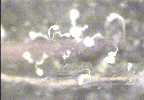
- Open jpeg (.jpg)
- Download bitmap (.bmp)
- Date collected: 05/08/2002
Site (plant species): Sequoia sempervirens ("B")
Zoom on image from above gives a good picture of fungal sporocarps/pycnidia.
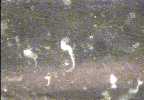
- Open jpeg (.jpg)
- Download bitmap (.bmp)
- Date collected: 05/08/2002
Site (plant species): Sequoia sempervirens ("B")
This zoom illustrates the mycelial network above the spore-producing structures.
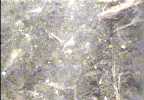
- Open jpeg (.jpg)
- Download bitmap (.bmp)
- Date collected: 05/08/2002
Site (plant species): Sequoia sempervirens ("B")
Another fungal hot spot...
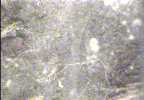
- Open jpeg (.jpg)
- Download bitmap (.bmp)
- Date collected: 05/08/2002
Site (plant species): Sequoia sempervirens ("B")
More fungal activity; notice the branched hyphae.
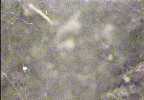
- Open jpeg (.jpg)
- Download bitmap (.bmp)
- Date collected: 05/08/2002
Site (plant species): Sequoia sempervirens ("B")
Hyphal web...
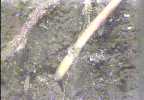
- Open jpeg (.jpg)
- Download bitmap (.bmp)
- Date collected: 05/08/2002
Site (plant species): Sequoia sempervirens ("B")
Old and young roots.
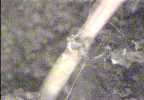
- Open jpeg (.jpg)
- Download bitmap (.bmp)
- Date collected: 05/08/2002
Site (plant species): Sequoia sempervirens ("B")
Zoom in on young root; notice the web-like fungal hyphae.
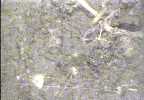
- Open jpeg (.jpg)
- Download bitmap (.bmp)
- Date collected: 05/08/2002
Site (plant species): Sequoia sempervirens ("B")
More web-like hyphae associated with roots...
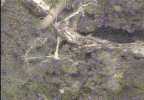
- Open jpeg (.jpg)
- Download bitmap (.bmp)
- Date collected: 05/08/2002
Site (plant species): Sequoia sempervirens ("B")
zoom...
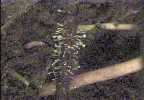
- Open jpeg (.jpg)
- Download bitmap (.bmp)
- Date collected: 05/08/2002
Site (plant species): Sequoia sempervirens ("B")
Intense fungal activity on older red roots with unaffected roots in the background.
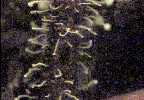
- Open jpeg (.jpg)
- Download bitmap (.bmp)
- Date collected: 05/08/2002
Site (plant species): Sequoia sempervirens ("B")
Zoom on above...